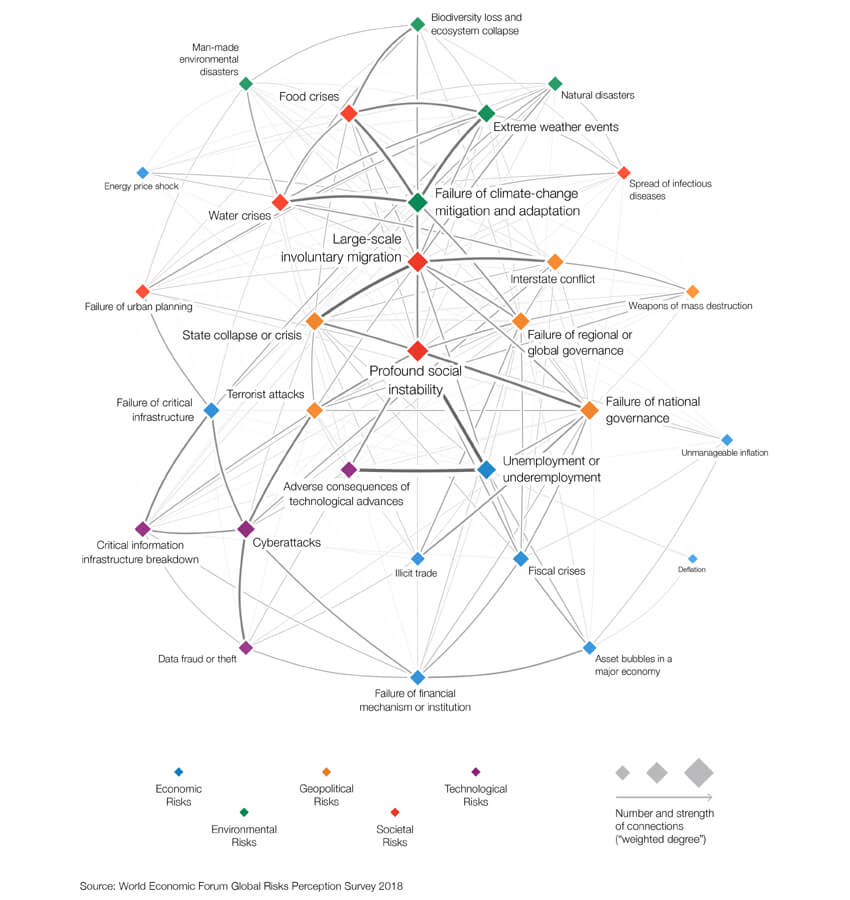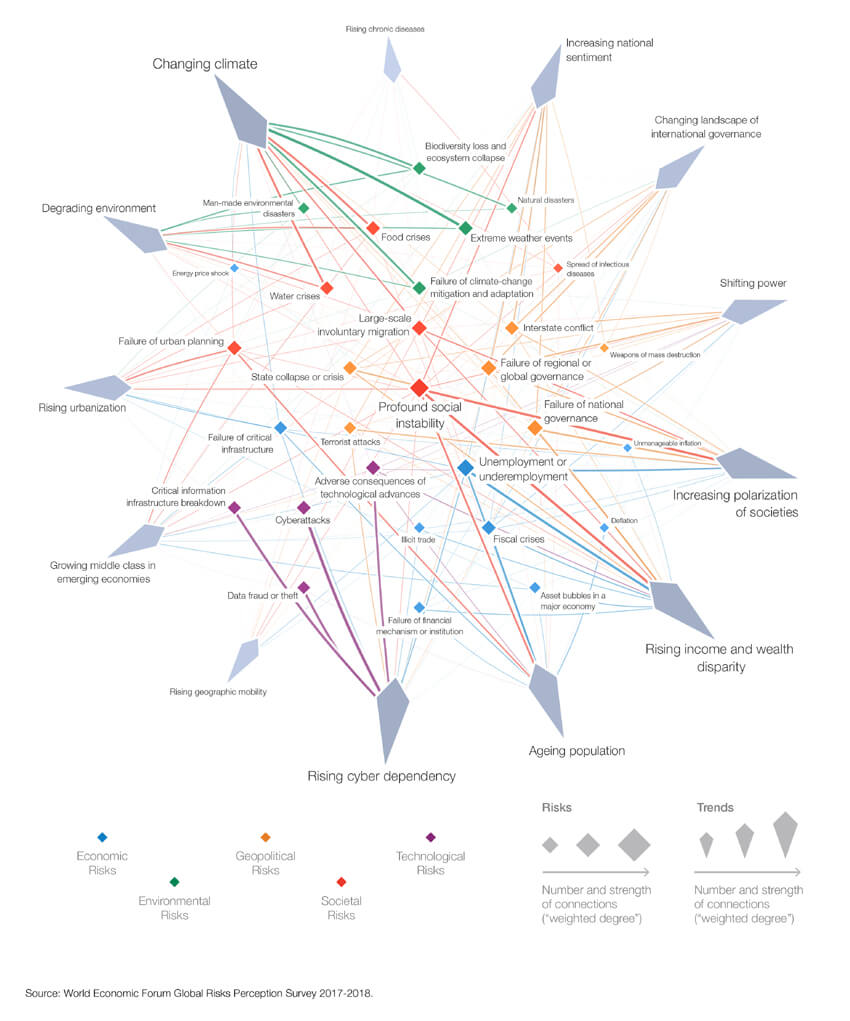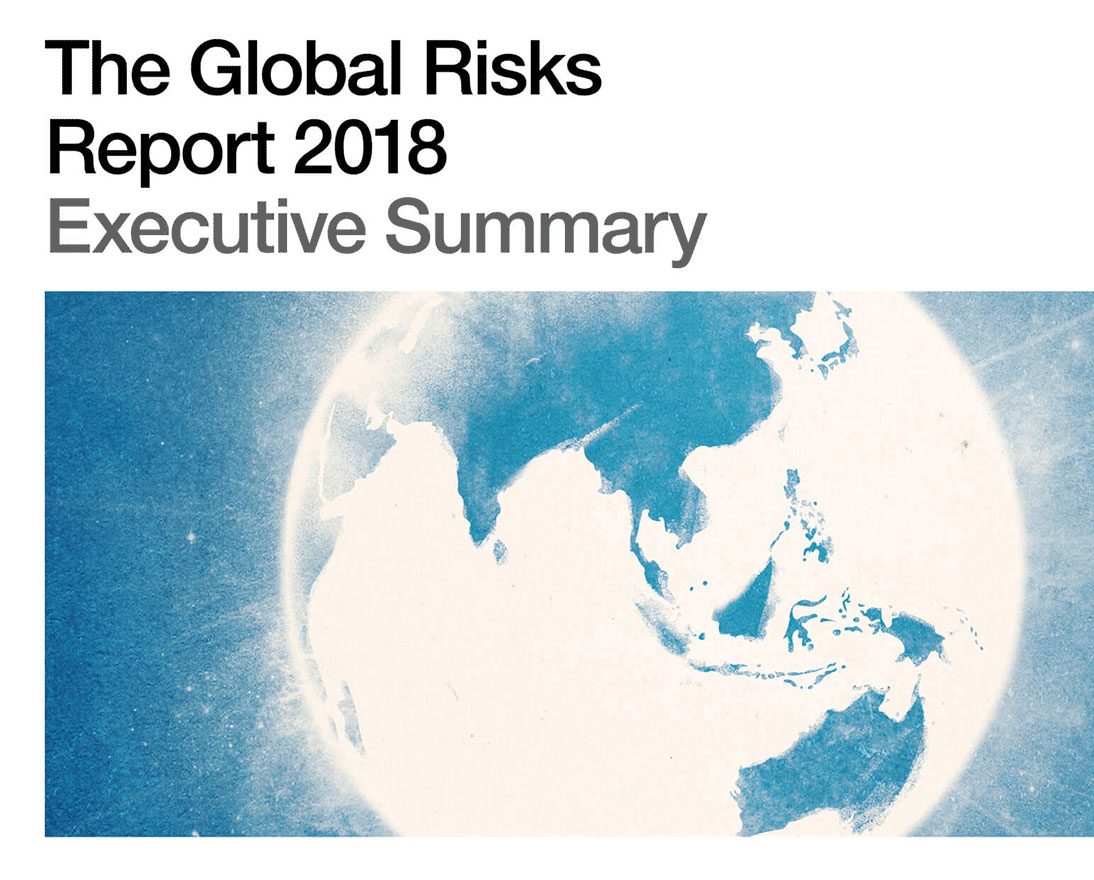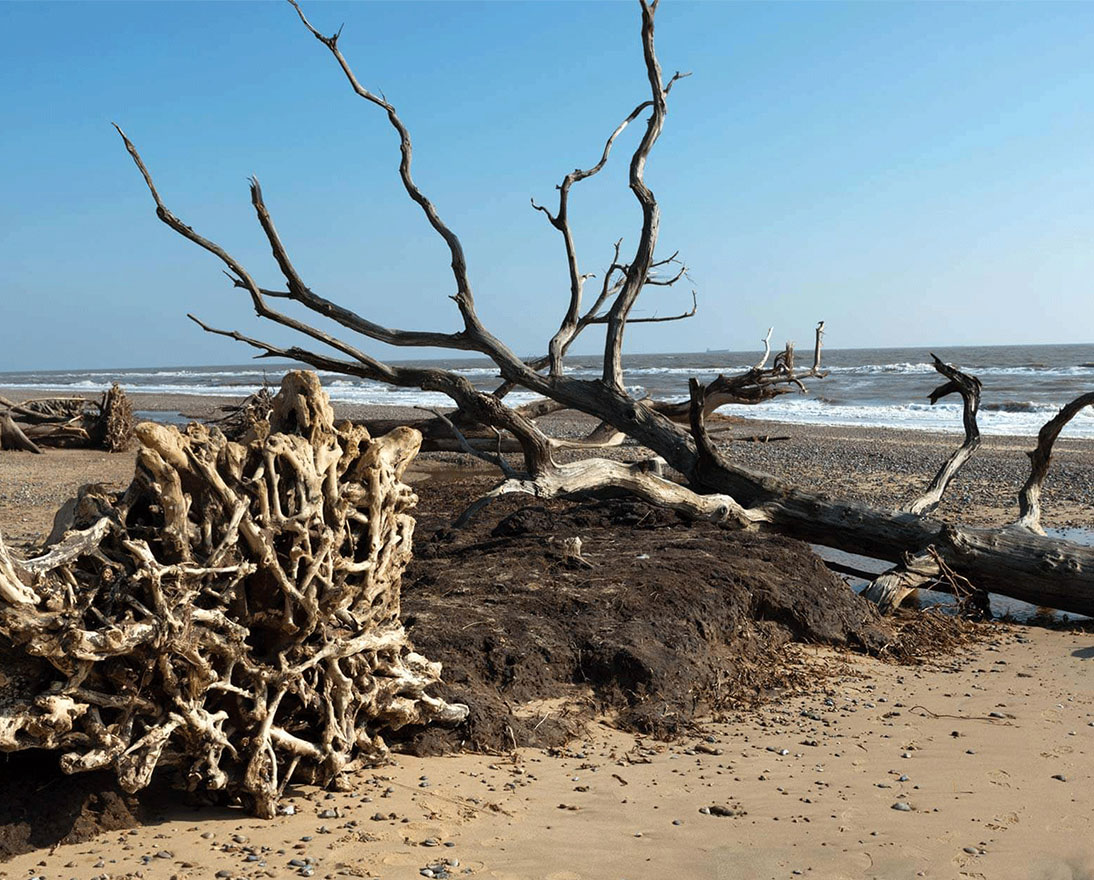The global risks & risks-trends interconnections maps 2018
Global risksInfographicJanuary 17, 2018
What are the most significant and interconnected risk trends that will shape global development in the next 10 years? Read more about this global risks assessment.
As in previous years, the 13th edition of The Global Risks Report is based on the annual Global Risks Perception Survey (GRPS)1, completed by 900 members of the World Economic Forum’s global multi-stakeholder community. Respondents are drawn from business, academia, civil society and the public.
The survey asked respondents to consider 30 global risks categorized as societal, technological, economic, environmental or geopolitical, over a 10-year time horizon2. 13 global trends are also considered by the survey.
To draw the Global Risks Interconnections Map 2018, survey respondents were asked the following question: “Global risks are not isolated and it is important to assess their interconnections. In your view, which are the most strongly connected global risks? Please select three to six pairs of global risks.”
New developments in the Global Risks Interconnections Map:
- For the first time, the most interconnected risks were “adverse consequence of technologies” and “unemployment and under-employment”, both highly connected with “profound social instability”.
- We see an even stronger interconnectivity between “failure to climate change adaptation“, with “food and water crises”, “extreme weather events” and “large scale involuntary migration”.

Similarly, for the Risks-Trends Interconnections Map 2018, respondents had to identify up to three trends that they consider important in shaping the global agenda in the next 10 years and the three risks that are driven by each of those trends.
Survey respondents were asked the following two questions: “Which are the three most important trends that will shape global development in the next 10 years?” and “For each of the three trends identified in the previous question, select up to three global risks that are most strongly driven by these trends.”
The information thereby obtained was used to construct the Risks-Trend Interconnections Map 2018.

- A “global risk” is defined as an uncertain event or condition that, if it occurs, can cause significant negative impact for several countries or industries within the next 10 years.
- A “trend” is defined as a long-term pattern that is currently evolving and that could contribute to amplifying global risks and/ or altering the relationship between them.
1 The Global Risks Perception Survey (GRPS), discussed in the chapter “Fractures, Fears and Failures”, is the World Economic Forum’s source of original data harnessing the expertise of the Forum’s extensive network of business, government, civil society and thought leaders. The survey was conducted from 28 August to 1 November 2017 among the World Economic Forum’s multi-stakeholder communities, members of the Institute of Risk Management and the professional networks of our Advisory Board Members. The results of the GRPS are used to draw the Global Risks Landscape, Interconnections Map, and Trends Map presented, and to provide additional evidence used in The Global Risks Report.
2 Survey respondents were asked to assess the likelihood of the individual global risk on a scale of 1 to 5, 1 representing a risk that is very unlikely to happen and 5 a risk that is very likely to occur. They also assess the impact on each global risk on a scale of 1 to 5 (1: minimal impact, 2: minor impact, 3: moderate impact, 4: severe impact and 5: catastrophic impact). See Appendix B of the Report for more details.






